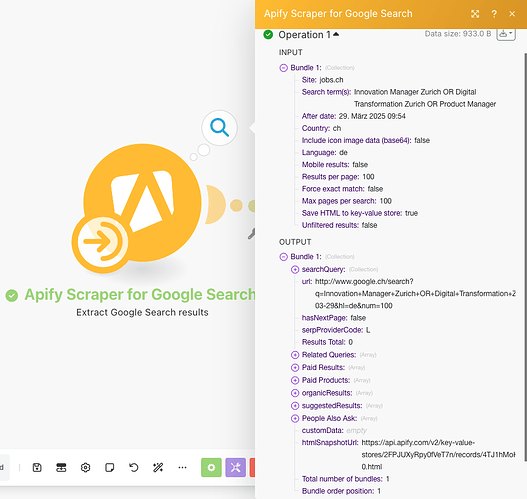Welcome to the Make community!
You have not yet provided sufficient information to demonstrate the problem that would allow us to reproduce the scenario and any error(s).
To allow others to assist you with your scenario, please provide the following:
1. Relevant Screenshots
Could you please share screenshots of your full scenario? Also include screenshots of any error messages, module settings (fields), relevant filter settings (conditions), and module output bundles. We need to see what you’re working with to give you the best advice.
You can upload images here using the Upload icon in the text editor:

We would appreciate it if you could upload screenshots here instead of linking to them outside of the forum. This allows us to zoom in on the image when clicked, and prevent tracking cookies from third-party websites.
2. Scenario Blueprint
Please export the scenario blueprint. Providing your scenario blueprint file will allow others to quickly recreate and see how you have set up the mappings in each module, and also allows us take screenshots or provide module exports of any solutions we have for you in return - this would greatly benefit you in implementing our suggestions as you can simply paste module exports back into your scenario editor!
To export your scenario blueprint, click the three dots at the bottom of the editor then choose ‘Export Blueprint’.
You can upload the file here by clicking on this button:

3. Output Bundles of Modules
Please provide the output bundles of each of the relevant modules by running the scenario (you can also get this without re-running your scenario from the History tab).
Click on the white speech bubbles on the top-right of each module and select “Download input/output bundles”.
A. Upload as a Text File
Save each bundle contents in a plain text editor (without formatting) as a bundle.txt file.
You can upload the file here by clicking on this button:

B. Insert as Formatted Code Block
If you are unable to upload files on this forum, alternatively you can paste the formatted bundles.
These are the two ways to format text so that it won’t be modified by the forum:
-
Method 1: Type code block manually
Add three backticks ``` before and after the content/bundle, like this:
```
content goes here
```
-
Method 2. Highlight and click the format button in the editor

Providing the input/output bundles will allow others to replicate what is going on in the scenario, especially if there are complex data structures (nested arrays and collections) or if external services are involved.
Sharing these details will make it easier for others to assist you.
“Looping” Through Array Items
When you see an ARRAY, think ITERATOR module.
Then,
Combining Bundles Using Aggregators
Every result (item/record) from trigger/iterator/list/search/match modules will output a bundle. This can result in multiple bundles, which then trigger multiple operations in future modules (one operation per bundle). To “combine” multiple bundles into a single variable, you’ll need to use an aggregator of some sort.
Aggregators are modules that accumulate multiple bundles into one single bundle. An example of a commonly-used aggregator module is the Array aggregator module. The next popular aggregator is the Text Aggregator which is very flexible and can apply to many use-cases like building of JSON, CSV, HTML.
You can find out more about the other types of aggregator modules here:
Mapping a Specific Structure Into a Complex Field
The Array Aggregator module is very powerful because it allows you to build a complex array of collections for a later module’s field to map multiple items (collections) to it.
This is done using the “Target structure type” field in an Array Aggregator module.
Here is an example:
As you can see, the “Map” toggle on complex fields are used when you have an array. You can easily build an array variable to map to a future module’s field, by using an Array Aggregator module and select the “Target Structure Type” as the future module’s field you have mapped the array into.
Example
Here is an example of how your scenario could look:

This is just an example. Your final solution may or may not look like this depending on your requirements and actual input data.
Hope this helps! Let me know if there are any further questions or issues.
— @samliew
P.S.: Investing some effort into the Make Academy will save you lots of time and frustration using Make.
![]()








